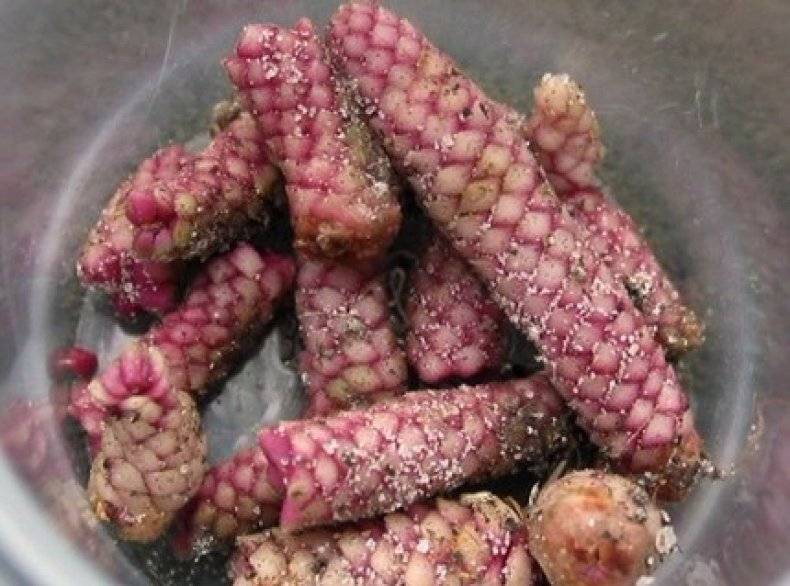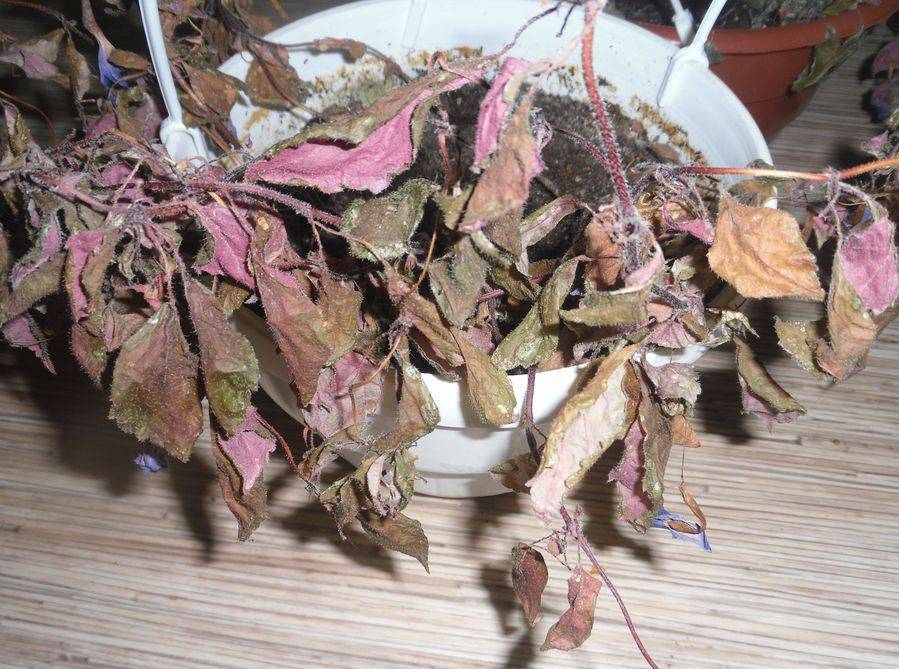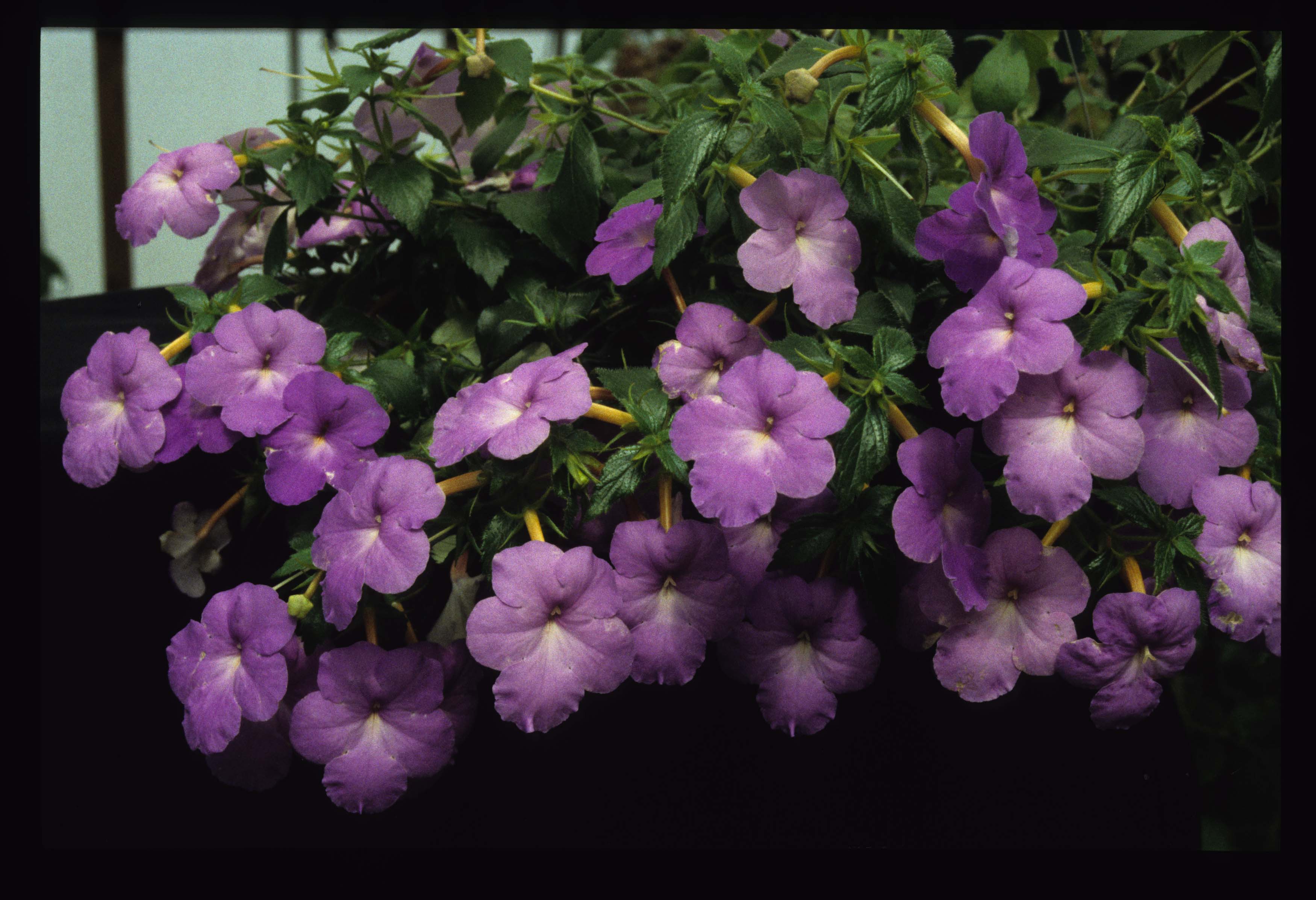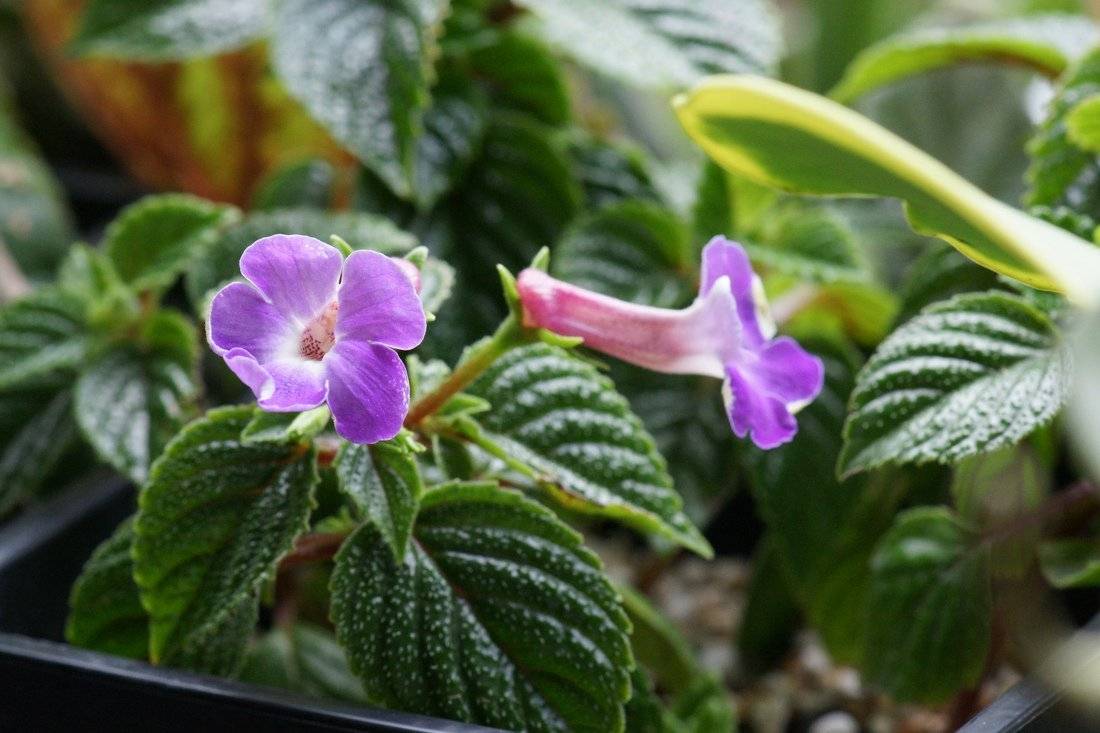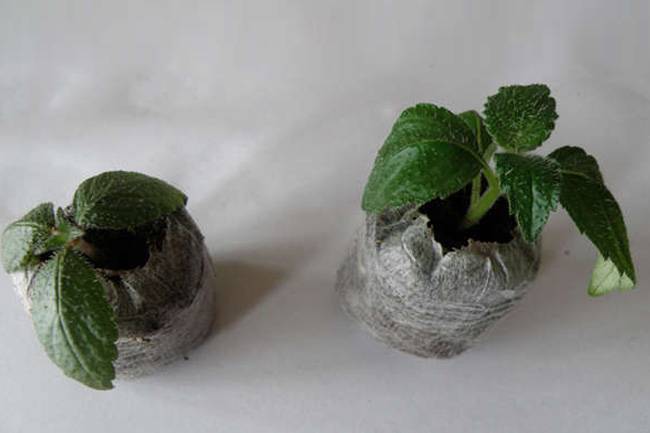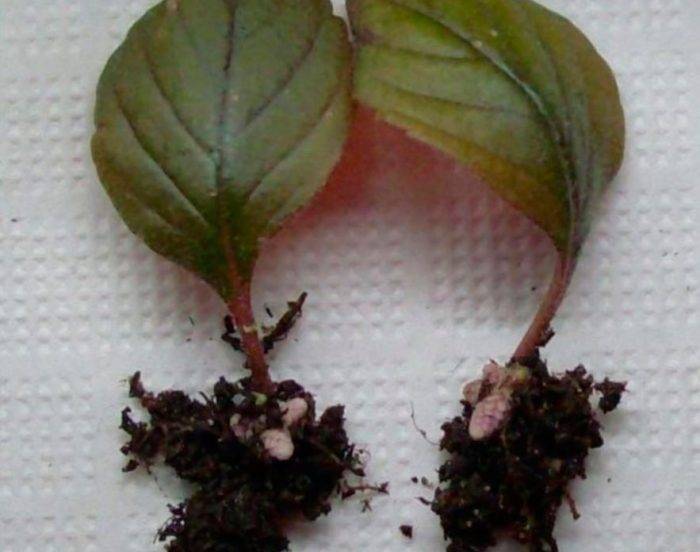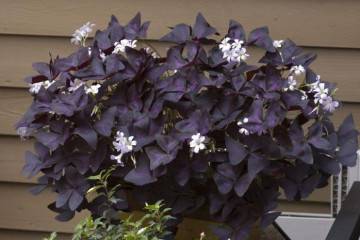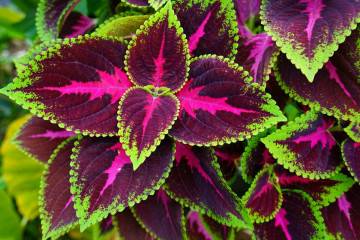Ahimenes flower - how to grow a plant
Content:
The beautiful indoor flower belongs to the extensive Gesneriev family. Its flowers, reminiscent of gramophone, are found in all kinds of shades, monochromatic and multicolored. It is easy and simple to grow it by decorating a windowsill, loggia, balcony or flower garden in the garden.
Ahimenez - what is this flower
The genus of flowering plants Achimenes (Latin Achimenes) belongs to the Gesneriev family (Latin Gesneriaceae). Perennial belongs to herbaceous rhizome species with a pronounced period of winter dormancy with the death of the aerial part.
Short description
This plant was found in South and Central America. Its aboveground part in modern cultivars, with its habit, directly depends on the variety. Today, breeders have bred over a thousand items that are more or less compact and all kinds of shades of corollas. There are simple flowers and double, single and paired, peduncles singly or in groups grow from the leaf sinuses.
The stem is usually weak, fragile and drooping or erect, practically not branching, has pubescence, like Saintpaulia. The leaf is also pubescent, juicy with a serrated edge, is colored on both sides, and easily breaks. The calyx is a simple flower with 5 lobes and a very narrow heart. The corolla has a long graceful tube, from which a wide limb (lip) departs with a smooth or corrugated edge (symmetrical or asymmetrical).
With a decrease in daylight hours in the fall, the aboveground part dies off completely. Rhizome - rhizomes go into hibernation. Outwardly, they look a little like elongated red-brown cedar cones about 1 cm in diameter and up to 5 cm in length, dormant buds are located in numerous scales. In spring, rhizomes wake up easily and rapidly build up new green mass.
Varieties of indoor plants with names
It is difficult to convey all the variety of modern varieties of achimenes, because new names go on sale every year and are registered in catalogs. Series, bred by eminent breeders, are popular among collectors. Each of them is based on the genotype of a particular species group.
Achimenes longiflora (Achimenes longiflora)
This species group has a simple five-lobed flower of white blue or blue-violet hue. The leaf is serrated along the edge of green or with burgundy veins. Sheet bundles 3-4 pcs. grow in whorls on juicy ampelous shoots. Country of origin - Guatemala. It was first cultivated in Great Britain back in 1841.
Achimenes grandiflora (Achimenes grandiflora)
Another species group, characterized by five-lobed flowers of purple, lilac or white color with a white core and red-brown specks in the throat. The flower tube has a characteristic blunt end. Although the name indicates the size of the flowers, they are inferior in size to many modern cultivars, and the leaves are significantly larger than corollas.
Achimenez Georgia (Juaregia)
In many catalogs, the species appears as an offshoot from the longiflora species group. It has large snow-white flowers, in which small yellow or lilac specks can be found in the pharynx. Ampelous highly branching shoots with thin stems droop under the weight of numerous buds.
Ahimenes: care and cultivation at home
In general, the rules of agricultural technology are quite simple, ahead of saintpaulias in this parameter, which are more capricious to care. And taking into account the long period of winter rest, when the plant does not require any attention, the culture is gaining more and more fans. Nothing prevents you from getting an excellent result in the conditions of Central Russia, the Moscow region. Only in the far north will it be necessary to organize additional lighting.
Illumination and temperature conditions
Western and eastern windows are most suitable for Achimenes, and they can also be successfully grown on glazed loggias with partial shading during the hottest hours of the day. The optimum temperature at home for active growth is in the range of 18-25 ° C. At higher temperatures, flowers may fall off too early and new buds may not open.
When the daylight hours are significantly reduced in September-October, flowering gradually decreases. The bush is preparing for winter rest. Gradually reduce watering, stop feeding. As soon as the shoots and leaves begin to fade, watering is stopped 100%.
Many gardeners prefer to dig up rhizomes in winter and store them in bags of dry peat or vermiculite. The permissible temperature range at this time is 12-18 ° C. No watering required. Rhizomes are checked once a month for damage.
Watering rules and humidity
In the active growing season, the bushes are watered strictly under the roots. It is impossible to spray foliage and flowers, as this provokes the appearance of fungal diseases. Re-watering is carried out only after the earthen coma in the pot has dried by half.
Top dressing and soil quality
Since the volume of flowers per season is amazing, top dressing is highly recommended with every watering. The dosage of fertilizer for decorative flowering indoor plants (with a predominance of phosphorus and potassium) is reduced 3-4 times from the recommended by the manufacturer. Fertika deluxe has proven itself well.
The soil suitable for planting is light and loose. Achimenes flowers react very well to soil for Saintpaulias, to which rippers are mixed up to a third of its volume (skew fiber, coarse sand, vermiculite, perlite).
Flower container size
The volume of the pots is selected depending on how much rhizome will be placed in it. Since the vast majority of varieties are ampelous, preference is given to suspended structures. If the florist has only 1 rhizome at his disposal, then the optimal pot size for her is 0.7-1 l, for 2-3 pieces. - 1.5 liters, etc.
Pruning and replanting
Pruning of shoots is not required for the plant. It is performed only if the lashes grow too long, and this spoils the appearance. If there are not many plants, then it is useful to regularly remove wilted corollas. This is done not only for aesthetic reasons, but also so that the plant does not waste energy on setting seeds.
Achimenes are transplanted only if the original pot was too small, and the bush has grown too much. In the fall, rhizomes are removed from the soil, sending only healthy and strong ones for storage.
Features of flowering plants
According to experienced florists, a plant that is more grateful for care than achimenes is still worth looking for. Regular feeding and moderate watering, a little sunshine, and you can be sure that the amicable flowering will be lush, abundant, continuous throughout the season.
A period of activity and rest
After planting with rhizomes in the soil in March, 2 weeks pass before the first shoots appear. The growth rate at this time depends on many factors: lighting, temperature, soil quality, condition of rhizomes, varietal characteristics.
The first flowers should appear in May. As the shoots grow, the number of corollas increases rapidly. Mass flowering ends in September. Withering of the aerial part takes 4-6 weeks. The rest of the time, until next March, the rest period lasts.
Types and shape of flowers
In simple species, the rim has the form of a tube with a wide bend, consisting of 5 lobes. But the newest varieties are found with a large number of blades and even with terry corollas. The color is 100% solid, with multi-colored dots, edges, gradients, as well as chaotic spots.
Flower reproduction methods
Perennial lends itself well to all types of vegetative reproduction. In some varieties, airy rhizomes are formed directly on the stems. They serve as excellent planting material, not inferior to underground ones. The rest of the species can be propagated by apical cuttings, leaves and seeds.
Growing from seeds
The breeding method is considered to be the most laborious. For this reason, it is much easier to find Achimenes rhizomes on sale than seeds that quickly lose their germination. Usually, the technology is in demand among breeders, through cross-pollination of new shades of flowers.
Outwardly, the seeds are more like pollen, so they must be mixed with ash or sand and sown on the soil surface. Moisten abundantly from a spray bottle, cover with glass or film and expect seedlings to appear in 1-2 weeks.
Cuttings
The top of a strong shoot with 3-4 whorls of leaves is an excellent material for grafting. If there are buds, then they are pinched off. You can root in soil or water. Not all cuttings will take root, so it is worth taking several copies at once. It is not required to organize a greenhouse.
Healthy adult leaves with strong petioles are also suitable for reproduction. They are immersed with a petiole to the lower edge of the leaf plate in the soil, and covered with a transparent cup or bag on top. It will take more time to root than in the case of shoots, but after 2-3 weeks the roots should form. In a transparent container, this will be very clearly visible. In the future, home care for the achimenes flower does not have any fundamental differences.
Growing problems, diseases and pests
The following diseases are most common:
- chlorosis and annular spotting. The reason is a violation of agricultural technology. It is necessary to adjust lighting, watering, temperature;
- fungal diseases. Occur in contaminated soil with waterlogging. Treat with watering with fungicides, reduce watering;
- bacterioses. They are transmitted by contact and through the soil. In most cases, treatment with antibacterial drugs alirin 5 or gamair will help.
The greatest damage to flowers is caused by aphids, whiteflies, spider mites. Bushes that are hung in pots in the garden or on open balconies are especially at risk. Delicate flowers can damage wasps and bumblebees. Sometimes caterpillars can be found in pots. If the bushes are planted in the garden, then the shoots can gnaw the snails.
Today, there are many effective preparations of a low hazard class on sale that can be used for treatments against pests in indoor conditions and in the open field: actellic and mite against spider mites, phytoverms and aktar against most known insects. They are applied in courses of 2-3 treatments at a certain interval.
When treating against diseases and pests, a systematic approach is important. The drugs are sprayed or introduced into the soil not only of infected plants, but also of everyone around them in order to avoid relapse and protect the entire population. Illumination and watering are reduced during treatment.
Ahimenes is a very beautiful and unpretentious flower, distinguished by a rich palette of colors and a variety of sizes. Once, having grown at least one bush, in the future it is difficult to deny yourself the pleasure of admiring it all summer long, since it is quite simple to care for.

